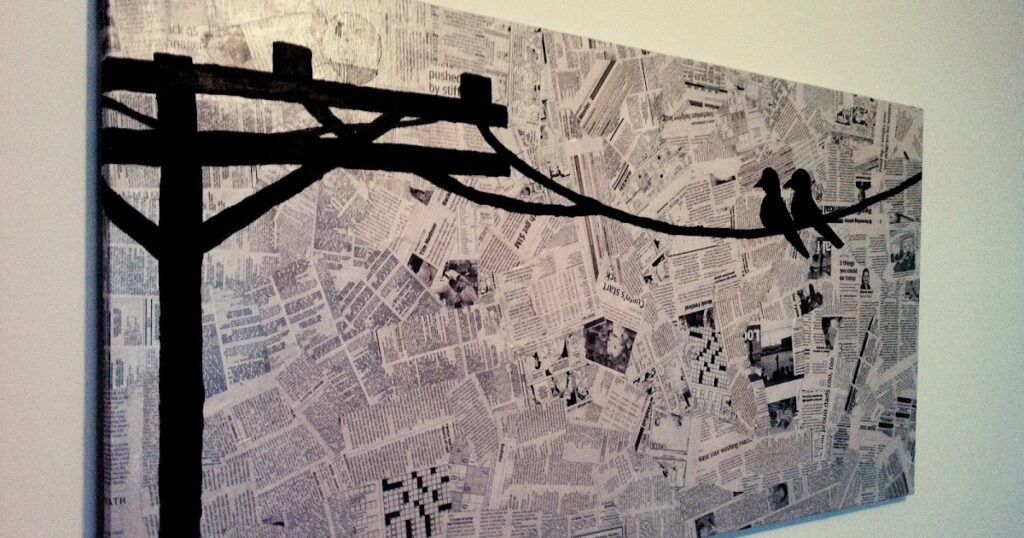Sketching a newspaper could be an enjoyable and imaginative endeavour. Newspaper drawing is creating drawings, cartoons, or other artwork to publish in newspapers. Usually, these illustrations go with news articles, editorials, features, or newspaper ads. Drawings or sketches used to represent the content of a news piece graphically or feature are called illustrations. They could contain illustrations informing the reader, such as graphs, scenes from events, or portraits of specific people.
Political cartoons are newspaper drawings that combine comedy, satire, and caricature to make statements about current affairs, politics, or social trends. They frequently include well-known public figures and symbols meant to elicit reflection and conversation among readers. Comic strips are a famous newspaper illustration that uses a series of illustrated panels to deliver a short tale or joke. They are common in newspaper comic sections, usually with recurring characters and themes.
Drawings that go with editorials, opinion pieces, or newspaper commentary articles are known as editorial illustrations. They could give further background or emphasis to the written content or graphically depict the text’s argument or point of view. Advertisements frequently use newspaper drawings to highlight goods, services, or occasions. These drawings could feature product images, logos, or other visual components to grab the reader’s interest and provide details about the advertised goods.
Newspaper Drawing
Since the earliest times of newspapers, there have been illustrations in newspapers. Newspapers in the 17th and 18th centuries frequently used woodcut graphics and news articles. Usually straightforward, these graphics improved the publication’s readability. Newspapers started to use increasingly complex drawings as printing technology improved. The development of lithography in the 19th century increased the use of newspaper illustrations by making image reproduction more straightforward and economical.
The late 19th and early 20th centuries are sometimes cited as the newspaper illustration of the golden period. Renowned artists like Winslow Homer, Thomas Nast, and Charles Dana Gibson rose to prominence, captivating readers with their intricate drawings and caricatures that brought stories to life. During this time, political cartoons became prominent in newspapers as a potent social commentary and satire tool. Caricaturists such as Thomas Nast profoundly impacted public perceptions of war, civil rights, and corruption.

Following the invention of photography in the late 1800s, newspapers started to use images more frequently to illustrate their news articles. Still, graphics were employed for advertising, editorial material, and features. Newspaper artwork has not vanished, despite photography now dominating newspapers. Alongside articles and columns, newspaper illustrations are still familiar and frequently created through traditional and digital methods. In addition, interest in digital illustration and visual journalism has increased with the growth of online newspapers and social media.
Why Newspaper Drawing?
Drawings in newspapers have always been a very accessible kind of art. Newspaper illustrations are readily available to a broad audience, reaching people from varied socio-economic backgrounds, unlike paintings or sculptures on display in galleries. Newspaper illustrations have spread ideas, opinions, and facts to a broad audience through mass communication. Newspaper artists have addressed important social, political, and cultural topics and sparked readers’ thoughts and discussions through political cartoons, editorial illustrations, and visual journalism.
Newspaper illustrations preserve historical events for future generations by recording specific moments. Newspaper drawings provide insightful historical perspectives and aid in comprehending the circumstances surrounding historical events, whether political cartoons ridiculing current affairs or illustrations accompanying news articles. Artists have a unique platform for artistic expression when they sketch in newspapers. Newspaper production has space and time limits, which may limit the detail and complexity artists can produce but also foster creativity and innovation. Newspaper artists frequently have to work fast and effectively while using visually stunning and informative techniques.
Newspaper illustrations capture the aesthetic and cultural fads of their day. Newspaper art varies over time due to societal shifts, technology, and artistic movements. Examples include the detailed pen-and-ink illustrations of the 19th century and the digital drawings of the 21st. Examining newspaper illustrations can provide essential insights into the aesthetic concerns, values, and tastes of various historical times. Newspaper illustrations have had a variety of cultural influences. Political cartoons and comic strips have produced iconic characters and imagery that have remained engrained in popular culture, affecting how we view and comprehend the world and our collective memory.
Collage Drawing With Newspaper
Gather printed materials such as magazines, newspapers, or anything else you want to utilise for your collage. A strong foundation for your collage, like a piece of cardboard or thick paper, is also required. Also, collect scissors, glue, and other supplies you wish to use for painting or drawing. Choose a subject or theme for your collage drawing. It might be anything that inspires you, such as an abstract design, a portrait, or a landscape. Knowing precisely what you want to do can help you choose the suitable materials.

To create your collage, turn to pages of newspapers and magazines and cut out pictures, headlines, or text. You can select images visually appealing to or connecting to your chosen theme. Try varying the shapes and sizes to add visual interest. Assemble the cut-out newspaper pieces on the base however you see fit. They can be layered, overlapped, or arranged in a particular composition or pattern. Experiment with several places until you are happy with the final effect.
After arranging your newspaper pieces, add painting or drawing elements to improve your collage. Use pencils, markers, or paints to add lines, shapes, textures, or other features to your collage. In this step, you can add your flair and personalise your artwork. As you work on your collage, hesitate boldly and try out new arrangements and strategies. You can always rearrange the parts or add or remove components until you get the desired outcome. Enjoy the creative process, and take your time.
Feature Image: crafted-love.blogspot.se





